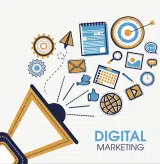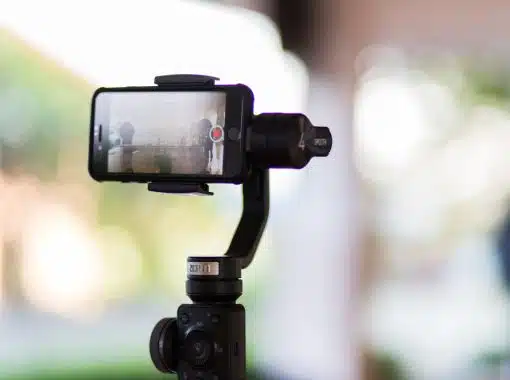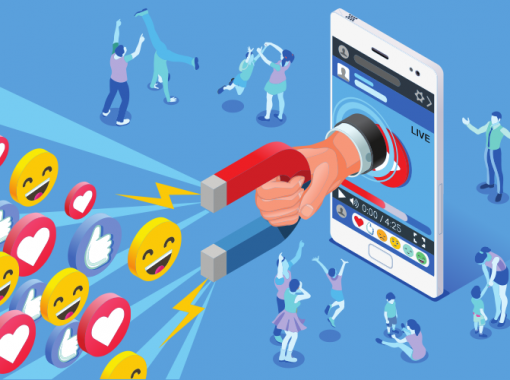
As a marketing vehicle, the Internet can be either a valuable tool to effectively and cost-efficiently reach a vast audience or a frustrating experience that can eat up a lot of time and cash. Marketers who understand their audience will carefully consider their front- and back-end strategy, communicate the right message, and can prosper here.
At 800.com, we’ve deconstructed digital marketing to its most basic elements. As long as you give thoughtful consideration to each of these seven elements, you can execute a campaign that will strengthen your brand and deliver impressive bottom-line results.
1. A Communications Strategy That Grabs the Attention of a Relevant Audience
Every campaign starts with knowing your audience. That’s because getting a call in response from one targeted prospect beats ten unqualified respondent calls.
Begin by drawing up a profile of your typical market members. How old are they? What’s their sex? Education level? Where do they live? What do they do for a living? How do they spend their leisure time?
Once you put all of this in writing, you’ll have a better understanding of how to create content that attracts the attention of the right audience. And you’ll better know where to place it.
Search engine optimization, or SEO, comes into play here. SEO strategy involves establishing and using the keywords or phrases that your audience would use in looking online for a business like yours. This means thinking like them, not like you and your work team. Dump the industry buzzwords unless you’re absolutely certain that your audience knows and regularly uses that same language.
Truly knowing and understanding your audience will also help you figure out the topics you’ll address in your content marketing and social media efforts. What do they want to know or see discussed in greater depth?
2. Message Flow That Takes Your Audience Smoothly from Awareness to Action
If you could write one single message that would motivate your audience to immediately pick up the phone or whip out a credit card, you’d be a marketing genius. As for the rest of us, we have to figure out how to convert prospects gradually over time by establishing and nurturing relationships.
If you’re selling a simple and inexpensive item, this process is sure to be less complex compared to marketing costly industrial equipment, fleet vehicles, or precious gems.
You know from experience how long it typically takes to make a sale. If it’s an impulse buy, just put the messaging in front of as many eyeballs as possible and make the response mechanism as simple as it can be.
But if it’s a big-ticket item or service, break the response down. It might take longer for your target market to even gain awareness of your company. From that point on, it’s likely to take numerous touchpoints before you make enough of an impression to convert them to customers.
Map out the path you’d like your prospects to take. For instance, if that first impression is an email, where do you want the link to take them? To a landing page on your website? What will you ask them to do there? Do you want them to subscribe to a newsletter, read more about your company, or get an immediate 15% discount on their first purchase if they take action now?
Whatever you want them to do, figure out the number of touchpoints you’ll need to make and map out the message flow that will get them to their final destination in your sales funnel.
3. Content Creation That’s Constant, Informative, and Makes You a Thought Leader
This is called the Information Age for good reason. The primary purpose of the Internet is to inform, educate and inspire. It’s likely that, regardless of what you’re marketing, your audience will first go online to learn more. That’s likely all they want to do when they first make your digital acquaintance.
When you present your company as the impartial thought leader on your industry or the goods or services you offer, you become valuable to that knowledge seeker. Remember, the more complex the sale, the more the prospect will need a credible information source like you which adds another layer of trust in your brand.
That’s why your website should be consistently freshened and new content created. That content might be 1,000-word blog posts on your website, three-minute YouTube video posts, or a combination of media and vehicle, depending on your industry and audience and the way you best communicate. Resources like Authority Site System can help in this area.
Don’t forget your SEO strategy whenever you post content. What words and phrases are your prospective customers or clients likely to use when searching for the information you can offer?
Just remember, Google algorithms expertly separate the fluff from meaty substance. If your content is lightweight or uninformative, or it’s awkwardly written because of how stuffed it is with keyword repetition, the search engine recognizes it for what it is. You’ll find your post buried (if you find it at all) so far down the results pages that no one is likely to see it.
On the other hand, informative, meaty content wins the heart of Google and search engines. Don’t try to defeat the algorithms. Just provide real information, go in-depth, and make every post of value to your audience.
4. Paid Advertising Placed for Return on Investment Potential
ROI is the lifeblood of advertising. No matter how big your company is, you have limited ad dollars. We all do. A dollar wasted is gone forever.
That’s why it’s a good thing that digital advertising can be paused quickly. Whether your paid ad vehicles include emails, social media ads, banner ads, YouTube videos, or all or none of the above, you can alter your approach based on results monitored in real-time.
Which ad vehicle makes your phone ring? Which call to action converts best? Is there a particular headline that seems to spur more response than others? Every element of your ad strategy can be second-guessed as your campaign runs. This minimizes ad waste and gives you the ability to focus your attention on what seems to be your most successful approach.
5. A Social Media Presence That Creates and Strengthens Relationships
Last we heard, 97% of Fortune 500 companies have a web presence. For small businesses, having a website can be very important.
Few advertisers in the pre-digital days could boast about running a zero-cost marketing campaign. And yet nada can be the starting point for your social media budget. Any company can get a free presence on Facebook, LinkedIn, Instagram, and most other social media platforms. From this position, you can build a list of current and prospective customers who are interacting with your company, not just getting constantly hit with your ad messages.
Remember, social media communication is social. It’s a two-way street. If done right, you should be considering your customers’ suggestions, responding to their complaints or bad reviews, and seeking their feedback. As your lists of followers grow, you’ll learn more about attitudes toward your company and its offerings. Followers can become listening boards for your business.
Your social media platforms are also good places to announce new product launches, company events, special discounts, direct your followers to company news, new blog posts, or website updates.
Make sure your social media presence is constantly refreshed and monitored. Your followers will quickly lose interest in your social media presence if it looks like your company gave up interest first.
6. A Respected Response Mechanism
Not long ago, we heard of an advertiser who was grumbling that their advertising wasn’t working. They were getting no response. When the marketing agency dug deeper they found that no one was monitoring the phone where the calls come from.
That was a pretty important detail that got away from the advertiser. At the beginning of this post, we asked what you wanted your audience to do. That’s critical information if you want to initiate or continue a relationship with prospects (and you do!). Don’t write “give us a call,” until you figure out who’s going to take the call. Be sure these employees are qualified to answer questions, communicate company or product strengths and turn window shoppers into buyers.
At 800.com, we can help make the phone ring with vanity phone numbers that are both memorable and relevant to your marketing campaign or type of business. We can help make your 800 vanity phone number the call to action at every customer touchpoint.
Let’s say that your call to action is to get the prospect to subscribe to your monthly digital newsletter. This can be a great strategy to capture contact information and start to move prospects into the sales funnel, but the rest of that strategy must be thought out at least as much as the contact capture.
Does your newsletter come out monthly, as promised? Every month? Is it professionally produced and filled with content that is relevant, informative, unique, and engaging? If not, you’ve only captured contact info—not customer interest.
The point is, your response mechanism must be strategic. You don’t put a call to action blurb in the last line of your ad simply because that’s how you were trained to finish an ad. The final objective must be to initiate and nourish a relationship up to and long after that first sale.
7. Expectations that are Realistic and Measurable
Remember, it’s relatively easy to make mid-flight alterations to your digital marketing flight plan. Load up on what’s working and toss out what isn’t. But how do you know which is which?
Sometimes it’s as easy as just seeing what makes the phone ring and what doesn’t. If you use 800.com vanity phone numbers, you can run half of your campaign on one phone number and the other half on another. Then measure results. Does one phone ring more than the other?
The Internet has a wealth of analytic tools to gauge the results of digital ads wherever you’re running them. Google Analytics is the most familiar of these tools to most web marketers, but others include SEMrush, Klipfolio, Optimizely, and many others. Many have lost-cost or no-cost level options or free trials.
What’s realistic in terms of results? If you’re a car dealership, it would be unrealistic to expect one banner ad to trigger an SUV sale. But can a short-term digital marketing campaign spur requests for a slick brochure about the vehicle? Or encourage more shoppers to stop by the showroom for a quick look?
Call 800.com
The more involved your company becomes with digital marketing, the easier it will be to benchmark campaign results so you’ll quickly recognize strategies that go above and beyond–and those that fail fast.
Whatever your approach, consider the inclusion of a vanity phone number from 800.com at that most critical point of your digital marketing campaign—your call to action. Visit 800.com or call us at (800) 800-4321.





